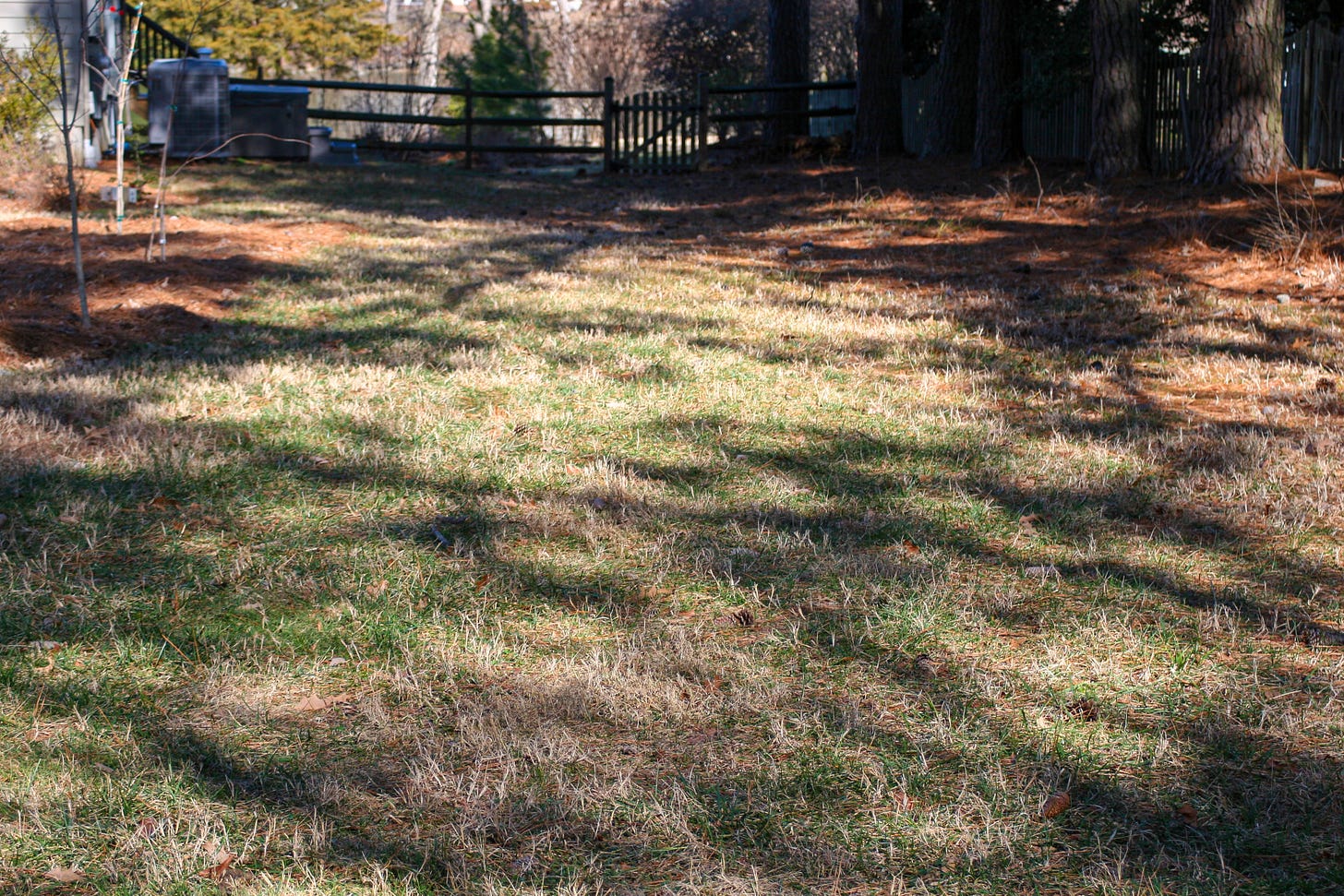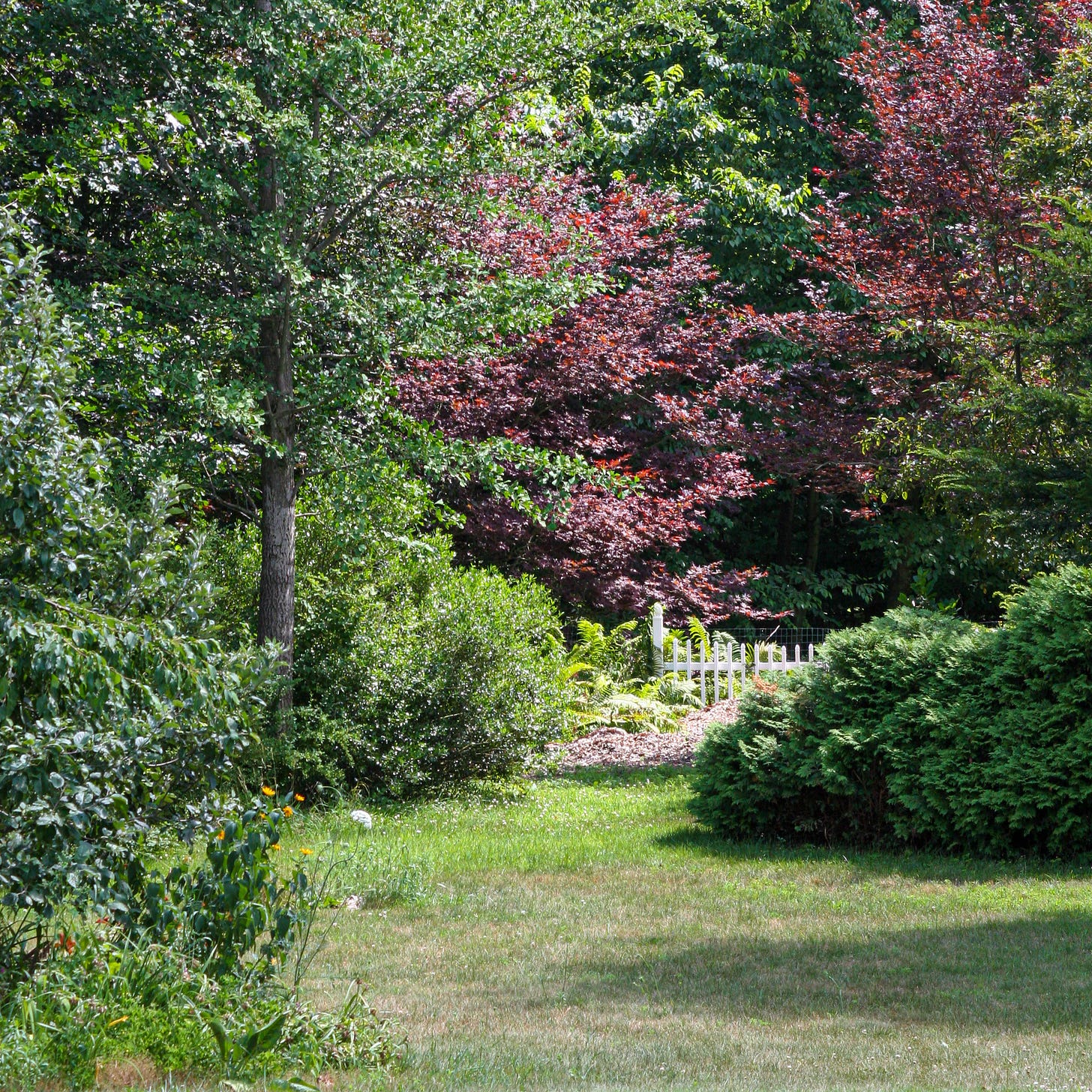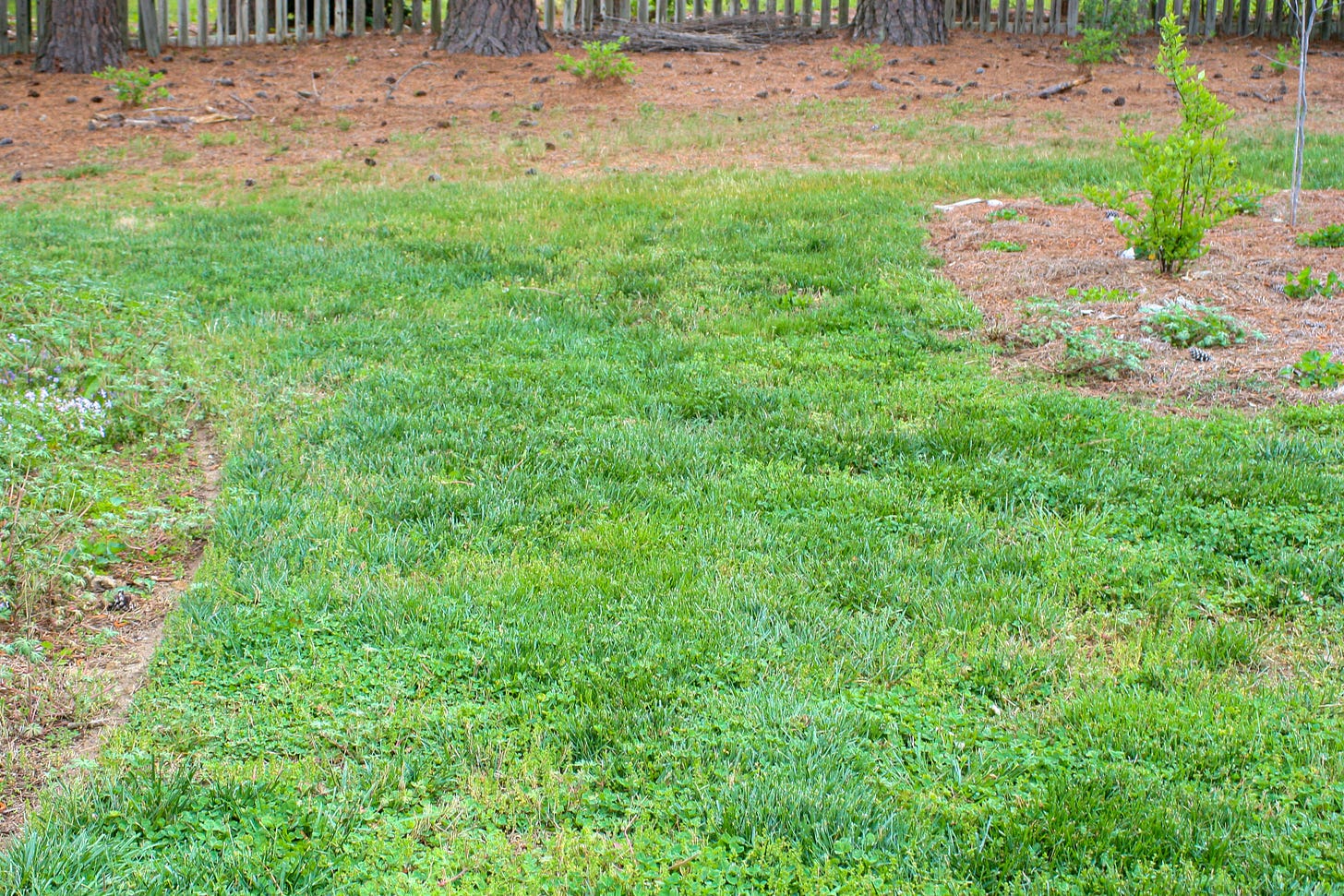Creating Paths
There’s something that calls when you view a path. The desire to walk down it, even knowing exactly what’s on the other side, can be overwhelming. Mazes take advantage of the human love of paths!
Paths are wonderful things in your own yard, too. Created over an area you don’t want to plant because of underground wires, etc., they are just as lovely and inviting as anywhere else. Thus you can make good use of an otherwise unused area in your yard.
At left is a gravel path created to keep shovels, etc., away from various pipes. Here gravel was used, but the sky is the limit when it comes to how, or even if, you choose to cover your pathway.
In this instance, the homeowner had used landscape cloth to prevent weeds, later removing it (see “getting rid of sod”). Gravel creates an inviting walk that is easily clearable in winter.
Creating a path can be as simple as not planting over the area, or as elaborate as you care to make it. You can mow grass to create a simple path between plantings; this approach can make delightful effect in meadows.
Frequently it works well to leave a mowable path over power lines, etc., that can, if you later wish, be “upgraded” to a more formal approach such as mulch or gravel. Left as it is, it looks fine, does the job, and allows access to power lines if needed and keeps shovels far away from danger.
If your path is to mark out an area which shouldn’t be planted, such as over buried power lines, etc., it’s best to mark the path prior to planting. You really don’t want to hit a power line with your shovel. In these cases, simply pile mulch all along the proposed path and plant on either side.
Paths can create transition from one section of the yard to another. Large side yards can be boring swathes of lawn to be mowed or delightful interludes between different areas of the yard.
Below shows a sideyard path created first by mowing grass in between plantings. The homeowners made this path over several years. For the first few, while trees and shrubs grew tall, the entire path was simply mowed. When mowing became difficult due to the increasingly narrow path, mulch was placed instead of grass.
The path leads, as you would expect, to a gate in the fence, allowing passage from the front yard to the back while maintaining a barrier for the family pets.
Some people use black plastic under path areas, but that can create problems with water pooling or running hard and moving the mulch. Landscape cloth works well for a year or two, but anyone who’s had to remove it will tell you “friends don’t let friends put down landscape mulch.” (See “removing sod”).
We are not the only animals that love paths. Hunters follow deer paths in the woods, etc., but foxes and other animals do, too. Country dwellers in snowy realms often see foxes and other wild animals trotting down the nicely cleared driveway - to them it’s a nice path between the snow!
All the world loves paths…







